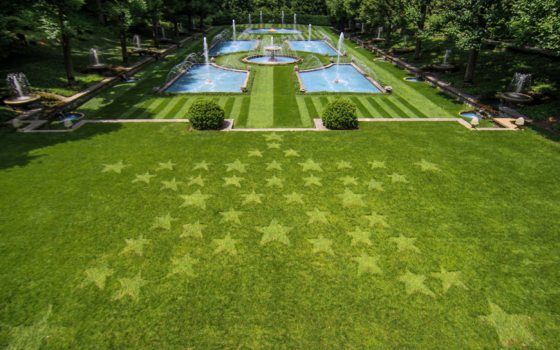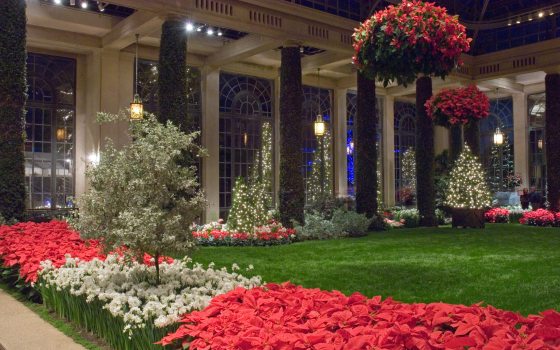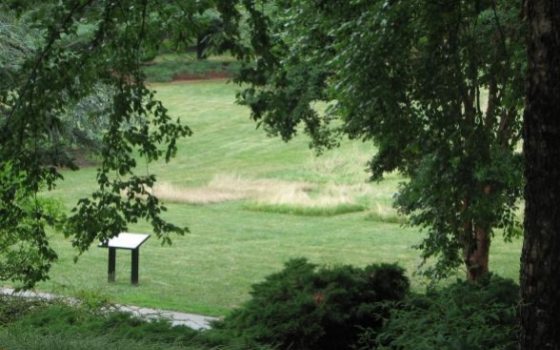Here at Longwood, we like to honor the Fourth of July with a flourish that bends the norm … a patriotic design in the turf of our Italian Water Garden, achieved by bending the grass just-so to achieve a desired aesthetic. This year, we have adorned this 360-square-foot area with a palette of stars in an intricate pattern of varying shades of green, beautifully complementing its formal surroundings. How do we achieve this design? There’s a precise science and art behind it … along with plenty of planning, a discerning eye, and the willingness to bend if things don’t go quite to plan along the way.
We start planning our Fourth of July turf pattern a few months in advance. I draw inspiration from traditional visual representations of the holiday, from stars to stripes to a sunburst flag and get my thoughts on graph paper, sketching it out a few times to scale in order to hone the design and using color to show the true representation of the end product. I’ve been designing and implementing the Fourth of July turf patterns since 2013, so by now I’ve really learned the area I’m working with, but I will of course make changes as I go, as paper can’t always represent what will happen once you put your design in the grass itself.
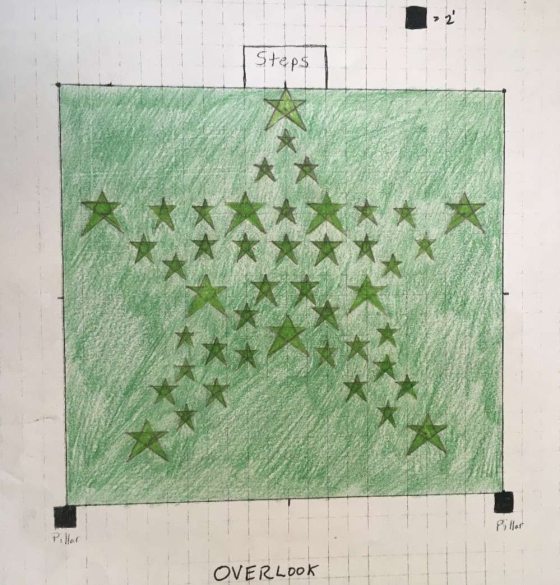
Once the design is set on paper, we start prepping the turf about a month in advance, mowing it in a certain way so the grass stands straight up right until the time we start implementing our holiday design. We roll out the implementation two or, ideally, three days before the holiday, depending on weather conditions. We first map out the design using metal stakes and string lines to make sure everything is perfectly straight, looking down from the Italian Water Garden overlook to check out lines.
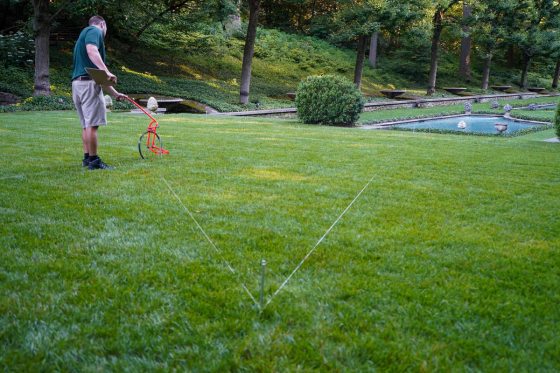
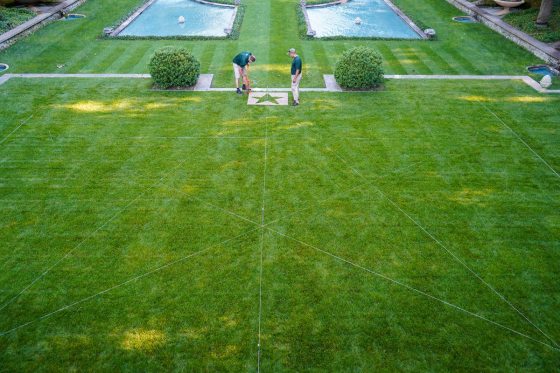
From there, we use a roller, brooms, and a high-pressure hose to bend the grass into our design. That’s right … our design isn’t achieved by mowing the grass in certain directions. A high-pressure hose is the tool behind our success.
Once we’re ready to use the high-pressure hose, we spray water in intentional directions to get the grass to bend in certain ways. When grass is bent away from you, the eye is left with a lighter shade of green. When grass is bent towards you, your eye sees a darker shade of green. It’s all in the way the light reflects off of the grass blades. While we technically could use a mower in place of the high-pressure hose, our designs are much too intricate to achieve using a mower.
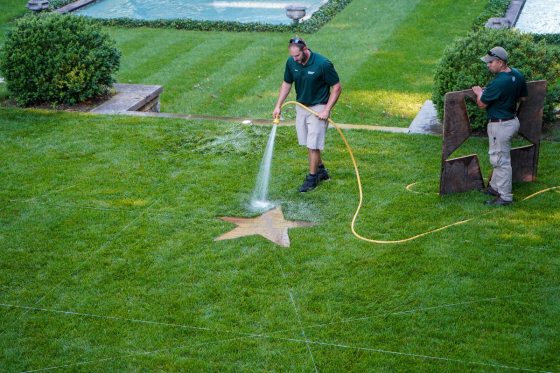
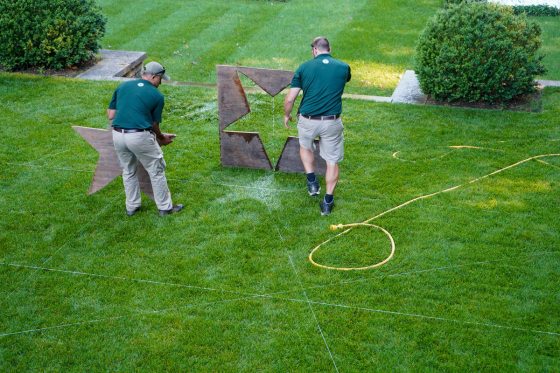
The height from the Italian Water Garden overlook provides the ideal vantage point for the design. If you were to view the design from a bird’s-eye view directly above the lawn, you would see nothing, as your eye relies on the light reflecting from the blades. If you were to view the design from the end of the Italian Water Garden opposite the overlook, it would be as if you were looking at the original design in a mirror; you’d see the light- and dark-colored grass in reverse.
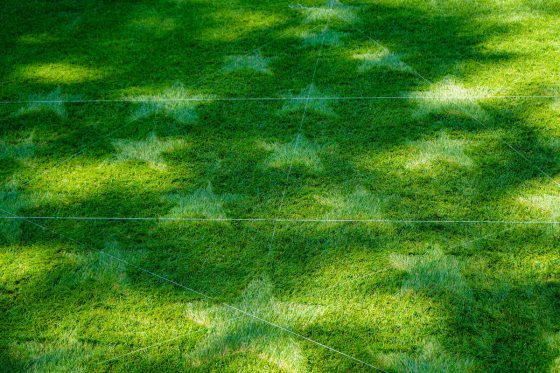
This year’s design presents some unique challenges, namely pertaining to the sheer number of stars in the space. The largest star in the design measures roughly 4 feet by 4 feet and the smallest 3 feet by 3 feet. The toughest part of the design is achieving intricacy between the stars. To do so, we laid a template, constructed ourselves out of a sheet of plywood with a star-shaped cut-out in the center, for each star. We also used plywood templates cut into star shapes to lay overtop the first template, just to make sure our points are precise. The actual shape of the star makes a difference in the end design result; if the points are too skinny, the stars won’t stand out as much. The legs of the star need to be wide enough to allow each star to shine on its own.
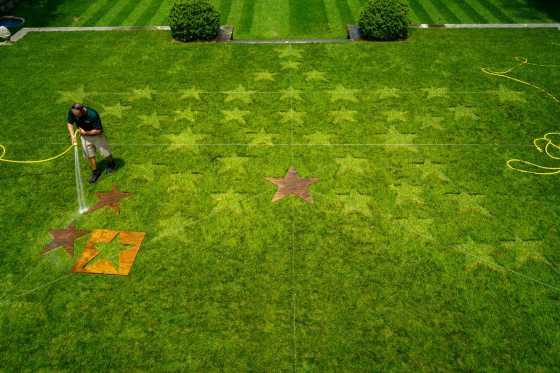
There have been times that we’ve had to make adjustments as we go, but we make every effort to get it right the first time … if we bend the grass in one direction and decide it’s not doing what we’d like it to do, we could go back and bend the grass in the entire other direction. However, it would take double the amount of time to get it right, so it’s best to make sure we’re doing it correctly the first time.
A team of two people, myself included, typically make the design come to life, each constantly taking a look at the turf from the overlook vantage point to make sure every line is precise along the way. We typically go over the entire design about five times before it’s fully ready to be viewed. At that point, the grass will remain in its designed direction until shortly after the holiday, when we mow again, turning over a new leaf … or, rather, a new blade of grass.
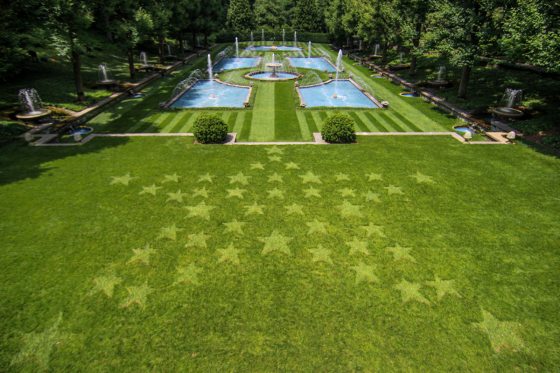
Until then, come see this year’s Fourth of July design for yourself!
